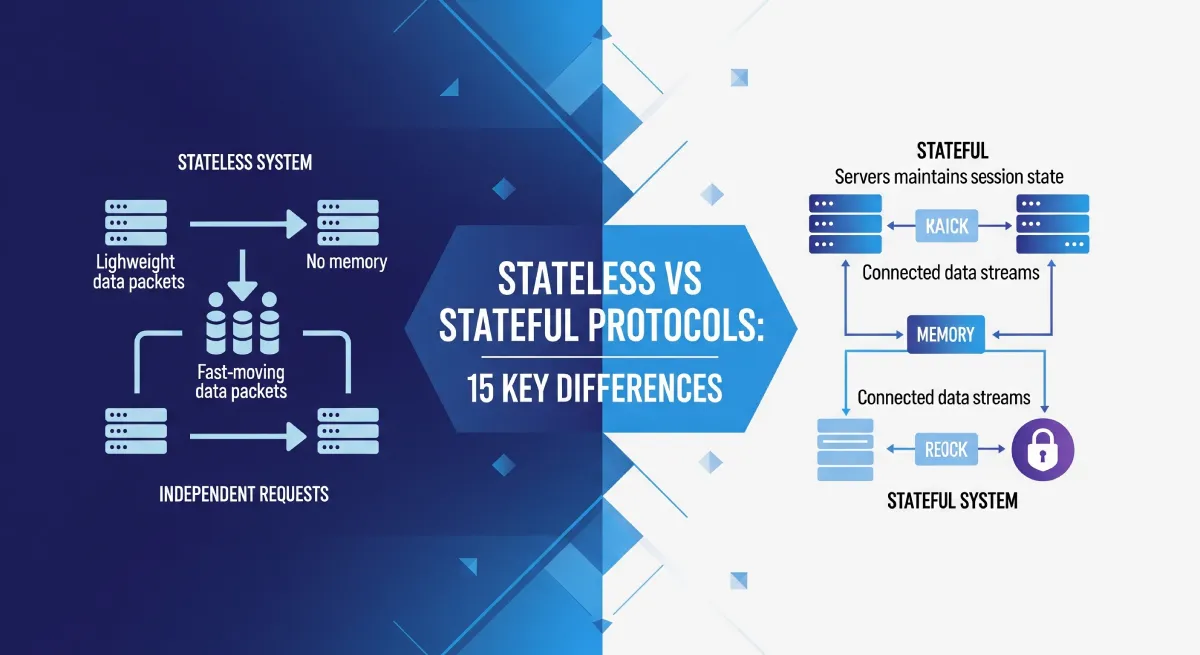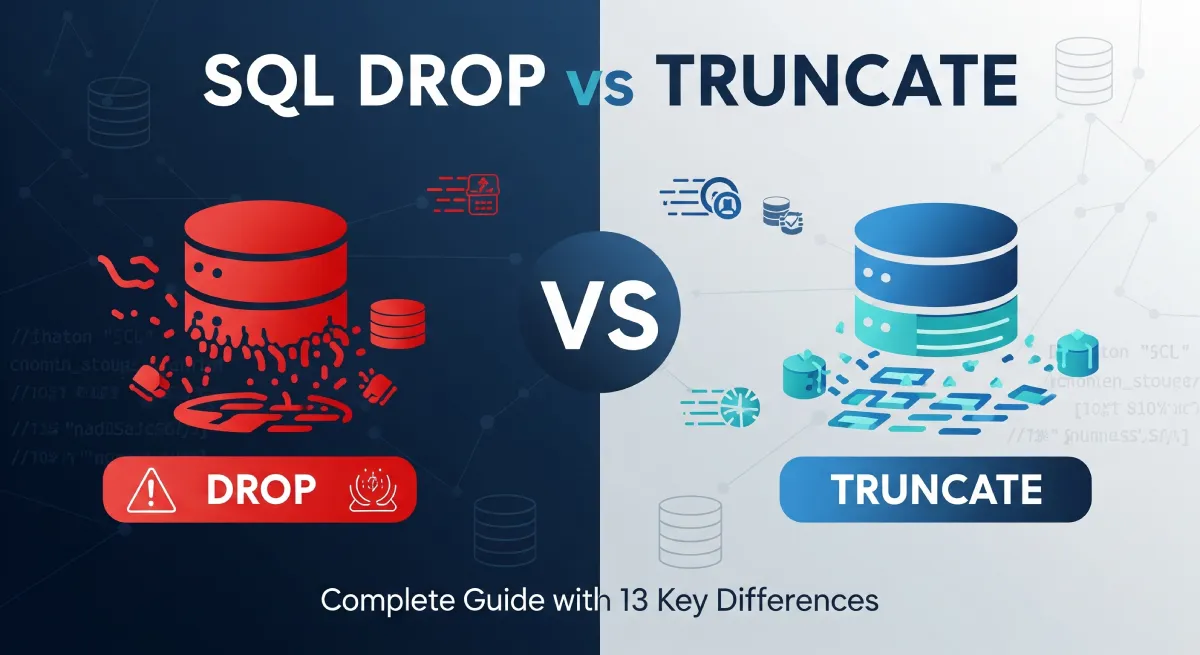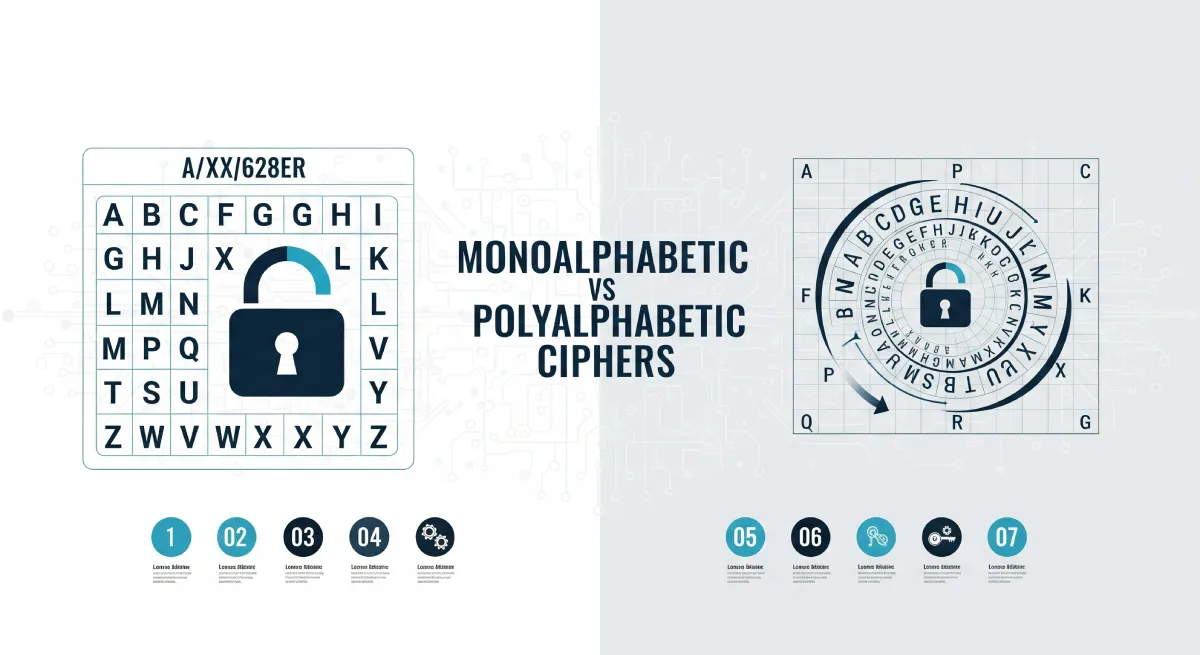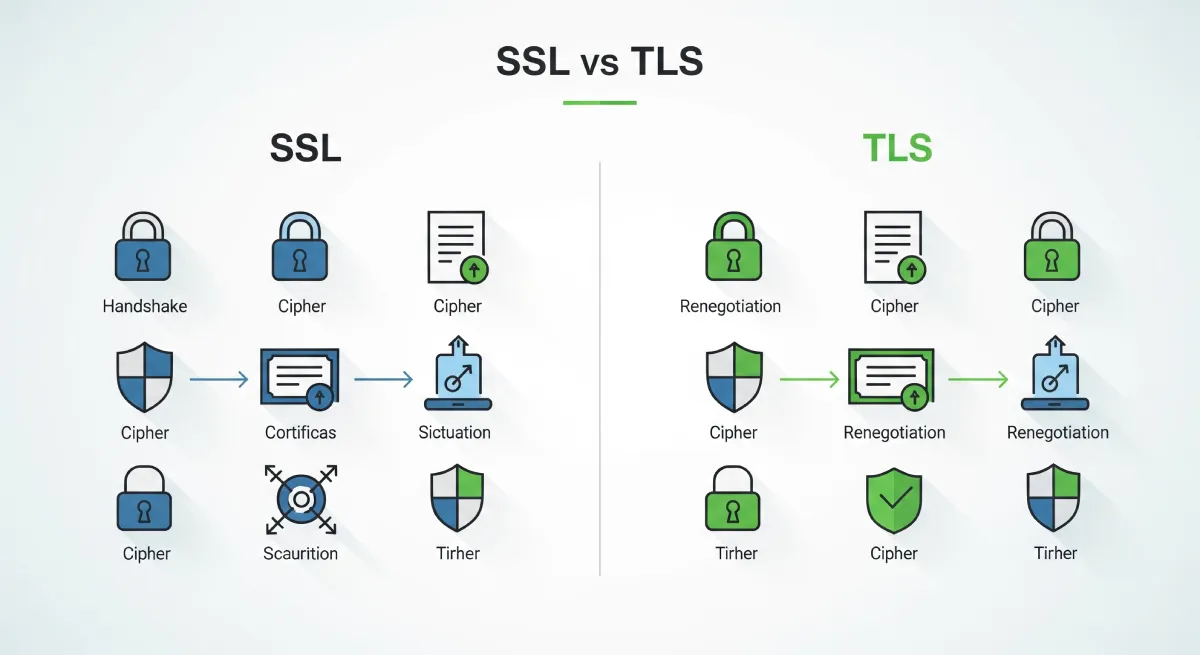In computing, 8085 and 8086 microprocessor highlights the evolution of microprocessor technology. The 8085 is an 8-bit processor, while the 8086 is a 16-bit processor with enhanced performance and capabilities. This guide explores their key differences in architecture, features, and applications.
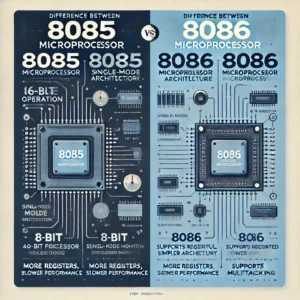
8085 Microprocessor | 8086 Microprocessor |
|---|---|
| 8 bit microprocessor. | 16 bit microprocessor. |
| 16 bit Address Bus. | 20 bit Address Bus. |
| It can access upto 2^16 = 64 Kb of memory. | It can access upto 2^20 = 1 Mb of memory. |
| 8 bit Data Bus. | 16 bit Data Bus. |
| It doesn’t have an Instruction Queue. | It has an Instruction Queue. |
| Clock speed of 8085 microprocessor is 3 MHz. | Clock speed can vary between 5, 8 and 10 MHz for three different 8086 microprocessors. |
| It does not have memory segmentation. | It has memory segmentation. |
| It does not support pipelining. | It support pipeline. |
| It supports only integer and decimal. | It supports only integer, decimal and ASCII arithmetic. |
| Cost of 8085 is low. | Cost of 8086 is High. |
| It operates on clock cycle with 50% duty cycle. | It operates on clock cycle with 33% duty cycle. |
| Less number of transistors (6500). | More number of transistors (29000). |
| It is Accumulator Based processor. | It is General purpose register based processor. |
| It has 5 Flags (Sign Flag, Zero Flag, Auxiliary Carry Flag, Parity Flag, Carry Flag). | It has 9 Flags (Overflow Flag, Direction Flag, Interrupt Flag, Trap Flag, Sign Flag, Zero Flag, Auxiliary Carry Flag, Parity Flag, Carry Flag). |
| Supports only single operating mode. | It operates in two modes. |
| Requires less external hardware | Requires more external hardware |
| 8 bit Data bus can access 2^8 = 256 I/O’s | 16 bit Data bus can access 2^16 = 65,536 I/O’s. |
| only 1 processor is used. | More than one processor is used. |
FAQs
1. What is the primary difference in the architecture of the 8085 and 8086 microprocessors?
In contrast, the 8086 is a 16-bit microprocessor, capable of processing 16 bits of data simultaneously, leading to better performance and a wider data bus (16 bits). 8085 is an 8-bit microprocessor, meaning it processes 8 bits of data at a time. This difference in architecture makes the 8086 faster and more powerful than the 8085.
2. How does the instruction set differ between the 8085 and 8086 microprocessors?
The microprocessor 8085 uses a relatively simpler instruction set, designed for basic operations and smaller applications. On the other hand, the 8086 has a more complex instruction set, with additional features that support larger programs and more sophisticated operations. The 8086 also supports more addressing modes, allowing greater flexibility in programming.
3. How does the clock speed compare between the 8085 and 8086 microprocessors?
8086 can operate at higher clock speeds, ranging from 5 MHz to 10 MHz or higher, while the 8085 microprocessor typically operates at clock speeds ranging from 3 MHz to 5 MHz. This higher clock speed in the 8086 contributes to its improved processing power compared to the 8085.
4. Can the 8085 and 8086 microprocessors work with the same memory and peripherals?
No, 8085 and 8086 microprocessors require different memory and peripheral setups. The 8085 works with simpler peripheral devices and a 16-bit memory, while the 8086 requires more advanced, 16-bit peripherals and memory due to its wider data bus and higher processing power.
Conclusion
In conclusion, while both the 8085 and 8086 microprocessors played significant roles in the development of computing, the 8086 stands out as the more powerful and versatile processor. It offers a larger memory address range, higher clock speeds, and a more complex instruction set, making it suitable for more advanced and demanding applications. The 8085, though simpler, is still valuable for basic computing tasks and educational purposes, particularly in understanding microprocessor architecture.
